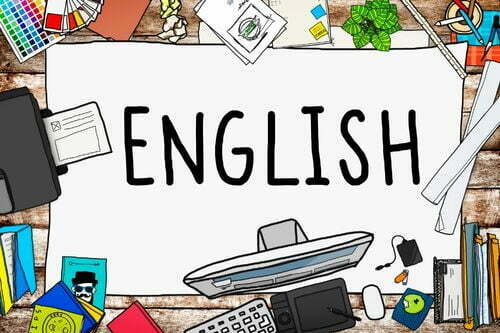Table of Contents
According to linguistic historians, the Proto-Indo-European language was the first English language source. The history of English languages spans three major eras – Old English (450–1100 AD), Middle English (1100–circa 1500 AD), and Modern English (since 1500).
Old English (450-1100 AD)
Three Germanic tribes (the Saxons, Angles, and Jutes) arrived in the British Isles in the fifth century AD from various regions of northwestern Germany as well as Denmark. Over time, the Saxons, Angles, and Jutes blended their various Germanic dialects with the language spoken in the country.
Prior to the Saxons, a variety of Celtic languages were spoken in Britain. After the arrival of the Romans, Britain received Latin from them. Roman soldiers and merchants are credited with coining many of the words that have survived from this time period. Win (wine), candel (candle), and weall (wall) are some examples. More Latin words became a part of the English language with the arrival of St. Augustine in 597 and the spread of Christianity in Saxon England.
Vikings invaded the country around 878 AD, introducing many Norse words into English, particularly in the country’s north. Sky, egg, cake, skin, leg, window (wind eye), husband, fellow, skill, anger, flat, odd, ugly, get, give, take, raise, call, die, they, their, them are just a few words that have Norse roots. The oldest known heroic epic poem, Beowulf was also written in this era.
Middle English (1100-1500)

The Duke of Normandy, William the Conqueror, invaded and took control of England in 1066. The new conquerors, known as the Normans, brought French with them, which was adopted by the Royal Court, as well as the ruling and upper classes.
Three languages were used in England during the Middle Ages: Latin, which was primarily used by the Church. Anglo-Saxon, which was the native tongue of the lower classes, and Norman French, which was the language of the upper classes.
In the fourteenth century, English regained its preeminence in Britain. Still, it did so while incorporating a large number of French words, including crown, castle, court, legislature, army, beauty, banquet, art, romance, servant, peasant, traitor, and governor.
The Canterbury Tales by Geoffrey Chaucer is the most well-known example of Middle English. It is a collection of tales about a group of thirty pilgrims who visit Canterbury, England, and it gives us a glimpse into life in medieval England.
Modern English (since 1500)

The renaissance, the industrial revolution, and British colonialism were the three major world events at the start of the Modern English period.
A large portion of the Greek and Latin words that entered English did so during the English Renaissance. The early 16th century to the early 17th century is known as the Elizabethan age” or the age of Shakespeare in English cultural history.
Many idioms and proverbs that William Shakespeare (1564-1616) contributed to the English language are still in common use today. The authorized or king James translation of the Bible was published in 1611, almost at the same time as
Shakespeare.
The Industrial Revolution began in England in the eighteenth century. As inventors created various products and machinery, new technical terms were added to the vocabulary. The creators of these words either chose a name for them or had these inventions named after themselves (trains, engines, pulleys, combustion, electricity, the telephone, the telegraph, the camera).
Between the 18th and 20th centuries, during the 200 years that Britain was an Empire, the English language underwent significant change as the British Empire expanded into the USA, Australia, New Zealand, India, Asia, and Africa. They sent people to colonize and live in the territories they had conquered, and as these people interacted with the locals, new words were added to the English language.
For instance, the words kangaroo and boomerang are indigenous to Australia’s Aborigine population; juggernaut and turban are of Indian origin, and cotton and coffee are Arabic words.
Key takeaways
- Time
Old English: Also known as the Middle Fifth to the Middle Eleventh Centuries, was spoken from 450 to 1100 AD.
Middle English: Also known as late 11th century to late 15th century, was spoken from 1100 to 1500 AD.
Modern English: Also known as the late 15th century to the present, dates from 1500 AD.
- Influence
Old English: Latin had an impact on Old English.
Middle English: French influences can be seen in Middle English.
Modern English: Had influence of many different languages from all over the world.
- Pronunciation
Old English: There were some silent letters in Old English.
Middle English: The written letters were all pronounced in Middle English.
Modern English: Some letters in Modern English are silent. Knight, for instance, has a silent K.
We hope this blog was informative. If so, please share your views in the comments below. Click here to reach out to us for more information. We would be happy to assist you with your queries.
Liked this blog? Read next: 5 English learning books to boost your language skills
FAQs
Q1. Why does Anglo-Saxon differ from present-day English?
Answer –There were two more foreign invasions in Britain, which is why Anglo-Saxon is different from modern English. The invaders were Normans from Denmark and Normans from Normandy in France. Old English was transformed into Middle English as a result of these invasions.
Q2. Which words were derived from Anglo-Saxon in Modern English?
Answer –The most commonly used words in English, such as the nouns father, mother, food, drink, bed, hunger, all-powerful verbs, and the majority of prepositions and conjunctions, are Anglo-Saxon in origin.
Q3. Why does the vocabulary in English have such a wide range?
Answer – English has a very large vocabulary because it has taken words from other languages like German, French, Latin, and Greek, English has a very large vocabulary. It’s true what they say—most English vocabulary has Latin roots. In a similar vein, it has borrowed some words from Dutch and Arabic.







